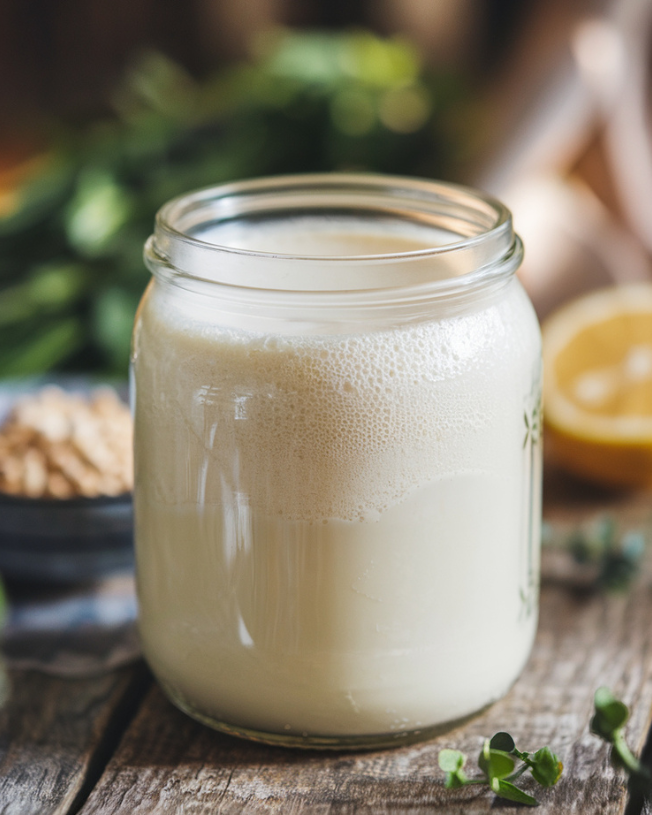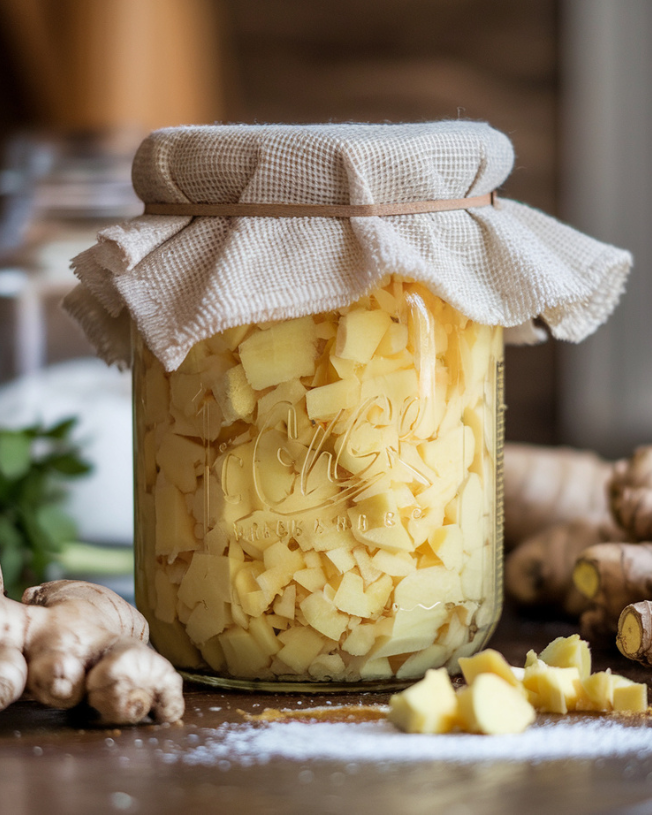Raw kefir has gained popularity among health enthusiasts, but many wonder, “What is raw kefir?”Simply put, it’s a fermented milk beverage packed with probiotics that promote various health benefits. Unlike traditional kefir, raw kefir is made with unpasteurized milk, which keeps more of the milk’s natural enzymes and nutrients intact. It’s tangy, refreshing, and packed with live bacteria and yeast, making it a powerful addition to a balanced diet.
In this article, we’ll explore what raw kefir is, its health benefits, how to make it at home, and creative ways to include it in your daily diet. Let’s dive into everything you need to know about this unique fermented drink!
Understanding Raw Kefir: What is Raw Kefir?
Raw kefir is created by combining raw milk with kefir grains, which are clusters of bacteria and yeast. These grains ferment the milk, transforming it into a creamy, slightly fizzy drink that’s similar to yogurt but thinner. Because it’s made with raw, unpasteurized milk, raw kefir retains its natural enzymes and is rich in beneficial bacteria that support digestive health. The term “raw” indicates that the milk has not been heated or treated, which is essential to preserving its nutrients and probiotics.
Health Benefits of Raw Kefir
Consuming raw kefir regularly can support overall well-being in many ways:
1. Supports Digestive Health
Raw kefir contains live probiotics that aid digestion by balancing the gut microbiome. These bacteria promote a healthy gut environment and can reduce bloating, gas, and constipation. Additionally, kefir’s natural enzymes may help with lactose digestion, which makes it easier to consume than regular milk.
2. Boosts Immune Function
A robust immune system typically begins with a balanced gut.The probiotics in raw kefir stimulate the immune response, making it easier for your body to fend off infections. Regular consumption may help improve resilience against common illnesses.
3. Enhances Nutrient Absorption
Fermented foods like raw kefir can boost the body’s ability to absorb essential nutrients. The live bacteria in kefir increase the bioavailability of vitamins, minerals, and antioxidants, making it easier for your body to utilize them effectively.
4. Provides Anti-Inflammatory Effects
Emerging studies suggest that probiotics may play a role in reducing inflammation. By balancing gut bacteria, raw kefir can potentially alleviate chronic inflammation, which is linked to various health conditions like arthritis and digestive disorders.
5. Promotes Bone Health
Raw kefir is naturally rich in calcium, magnesium, and phosphorus—minerals that are essential for strong bones. Drinking kefir regularly can contribute to bone density and reduce the risk of osteoporosis.
How to Make Raw Kefir at Home
If you’re wondering how to make your own raw kefir, the process is quite simple and requires minimal equipment.Follow this simple, step-by-step guide to begin:
1. Gather Ingredients and Supplies
To make raw kefir, you’ll need the following:
- Raw milk (preferably organic and grass-fed for the best quality)
- Kefir grains (available at health stores or online)
- A glass jar for fermentation
- A breathable cloth or paper towel
- A rubber band to secure the cloth
2. Combine the Ingredients
Add one to two tablespoons of kefir grains to two cups of raw milk in a clean glass jar. Stir the mixture with a non-metal spoon to ensure the grains are well distributed.
3. Cover and Ferment
Cover the jar with a cloth and fasten it with a rubber band. This covering allows air to circulate while keeping dust and insects out. Set the jar aside at room temperature for 24 to 48 hours, depending on your taste preference. Extending the fermentation time will produce a more tangy taste.
4. Strain and Store
After the fermentation period, strain the kefir grains using a plastic or silicone strainer (avoid metal strainers). Transfer the finished kefir to a storage container and refrigerate it. The grains can be used again for future batches.
Creative Ways to Enjoy Raw Kefir
If you’re new to raw kefir, there are numerous delicious ways to incorporate it into your diet. Here are a few ideas:
Smoothies
Add raw kefir to your favorite fruit smoothie for a creamy texture and a probiotic boost. It pairs well with berries, bananas, and even leafy greens.Salad Dressings
Raw kefir makes an excellent base for tangy salad dressings. Combine it with fresh herbs, olive oil, and lemon juice for a zesty topping.Breakfast Bowls
Pour raw kefir over your favorite granola, fruits, and seeds for a nourishing breakfast bowl that’s packed with probiotics and fiber.Baking Substitute
Raw kefir can replace buttermilk or yogurt in many baking recipes, adding a slight tang to pancakes, muffins, and breads.
Tips for Storing Raw Kefir
Proper storage is essential for maintaining the quality of raw kefir. Here’s how to store it:
Refrigeration
After fermentation, store raw kefir in the fridge, where it will keep for up to a week.Freezing for Longer Storage
If you have extra kefir, freeze it in ice cube trays for easy, single-serving portions. Frozen kefir retains its beneficial properties and can be thawed as needed.
Troubleshooting Common Issues
Making raw kefir can sometimes present challenges. Here are a few common issues and solutions:
Kefir Too Thin
If your kefir is too thin, it may need more fermentation time. Try letting it sit a few hours longer.Grains Not Multiplying
Kefir grains should slowly grow over time. If they’re not multiplying, it could be due to water quality or temperature. Ensure you’re using non-chlorinated water for cleaning, and keep the kefir at a consistent room temperature.Overly Tangy Flavor
If your kefir tastes too sour, try shortening the fermentation period. For a milder taste, ferment it for about 24 hours instead of 48.
Is Raw Kefir Safe?
While raw kefir has many health benefits, it’s essential to source high-quality raw milk from reputable farms to minimize health risks. Since raw milk isn’t pasteurized, there’s a slight risk of contamination. If you’re new to raw kefir, it may be best to consult with a healthcare professional, especially if you have specific health concerns.
Conclusion: What is Raw Kefir and Why Should You Try It?
Now that we’ve explored “What is raw kefir?” you can see how this traditional fermented drink offers more than just a unique taste. From aiding digestion and boosting immunity to providing essential nutrients, raw kefir is a wholesome addition to any diet. With just a few ingredients and some patience, you can make raw kefir at home and start reaping the benefits. So, why not give raw kefir a try?










